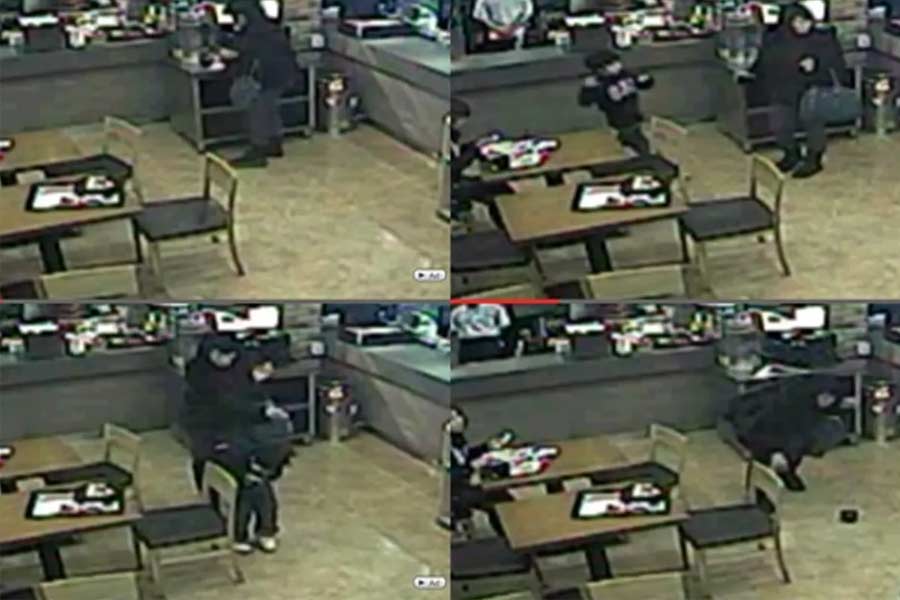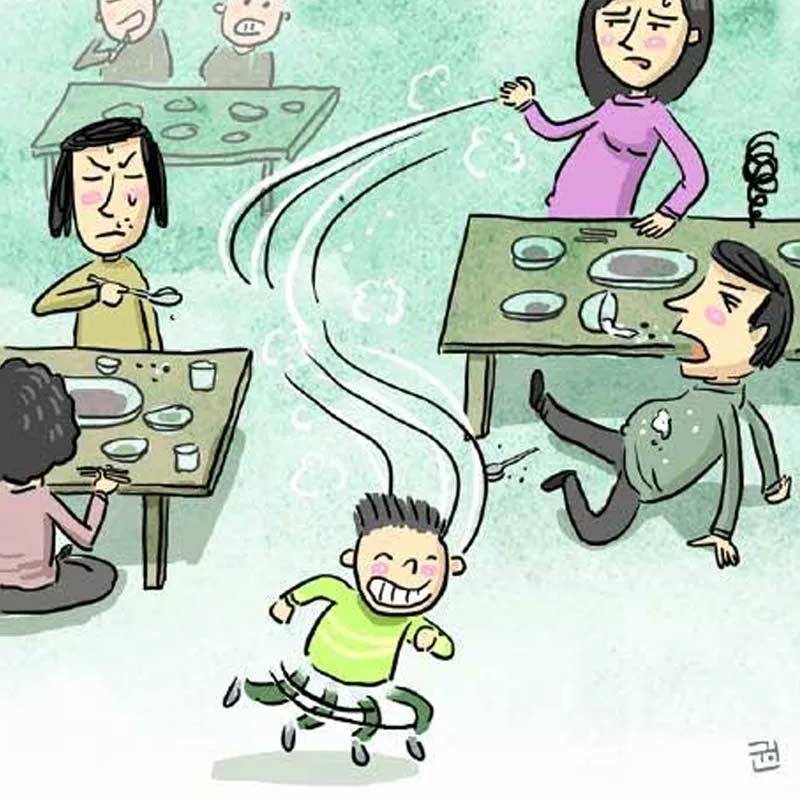Congratulations! You have successfully arrived at your dream travel destination in your dream country, South Korea. Unfortunately, only you are able to enter the premises. Your little ones, unfortunately, will have to wait outside because the place is under a strict “No Kids Zone” rule. Sounds familiar? If not, what if you are the one encountering such an experience? Yes, the “No Kids Zone” policy has become a massive debate controversy in South Korea and abroad, so let’s discuss all the pros and cons of this situation.
South Korea Recently Sparks More Pros and Cons Debate with “No Kids Zone” Policy
South Korea culinary business has now gained a massive increase in reputation thanks to “Culinary Class Wars” chefs and their restaurants. With their newly-found fame, fans have been flocking to these culinary destinations with long waiting lists that seem to be never-ending.
Unfortunately, this incredible development must now face an unexpected challenge due to the infamous “No Kids Zone” policy. According to several reports, famous “Culinary Class Wars” chefs, including Cooking Maniac, Triple Star, and the show’s winner, Napoli Mafia, have reportedly applied a “No Kids Zone” policy, banning children from entering their restaurants amid their immense popularity in South Korea.
This then caused another round of massive debate, raising more pros and cons on the long infamous “No Kids Zone” and the other “No XXX Zones” in the country.
But should it, really? What is this “No Kids Zone” all about exactly, and why do restaurants and some establishments in South Korea apply this rule despite the controversial debate? Let’s break down one by one.

What is the “No Kids Zone” in South Korea?
In South Korea, there are places where children under 10 or 8 years old are forbidden to enter.
No, we’re not talking about those adult establishments that are illegal for minors, like nightlife entertainment or Jeju Love Land.
Instead, you would most likely see these “No Kids Zone” signs in regular businesses in South Korea that are typically “safe” for children to enter. They include regular restaurants, cafes, and even movie theaters in South Korea.

This “No Kids Zone” concept first appeared around 2014 in South Korea. At the time, only a few cafes and fine-dining restaurants decide to apply this policy. And yet today, you can almost find these signs in the most popular establishments in Seoul, including the restaurants belonging to the rising “Culinary Class Wars” chefs.
In 2023 itself, there were reportedly 451 private establishments in South Korea with a “No Kids Zone” policy. It has also created a massive debate and controversy not only among civilians but also among government officials.
Behind the “No Kids Zone” Policy: All the Pros and Cons
So, how did it start? Do these business owners hate children so much that they deny entry with the “No Kids Zone” sign?
Actually, everything was never personal preference. At least, not at first.
Children’s Behavior: Legal Reasons
Initially, the “No Kids Zone” sign was a professional decision made by the restaurants’ owners due to the potential risks happening in the restaurants against the children themselves.
For example, there was a case in 2008 where a Korean BBQ owner must pay a mother and her child as high as 11 million KRW (around 8,300 USD). They must do so due to the child’s injury after colliding with the restaurant’s employee who was moving a grill. Both were found at fault at the time because the child was running around within the restaurant’s area.
Another incident occurred in 2013, in which a Busan employer had to pay 41 million KRW (around 30,000 USD) in compensation due to a similar case. This time, an employee accidentally spilled hot water on a child who crashed into them after running toward a playroom.

Since similar cases are happening everywhere, restaurants in South Korea have started applying the “No Kids Zone” policy. This policy became simply a protection for their businesses. After all, as a business owner, you have the right to take precautions against children’s “disruptive” behaviors and their irresponsible parents who seem to care less about the situation.

Owners’ Personal Preferences
However, over time, business owners in South Korea started turning to the “No Kids Zone” policy to justify their personal preferences.
Reports also revealed that various restaurant owners in South Korea started banning children in order to cater to their customers and their own personal needs.
A Japanese restaurant once reported going Kids-free because their foods are too spicy for children. Another cafe owner also denied children’s entry because they wanted to maintain a “sophisticated” atmosphere exclusive only to adults.

Between Rights and Discrimination: A Debate Controversy
As a result, many have been questioning this child-free policy.
While some believe that the policy falls under a business owner’s rights, others challenge the notion of being too discriminative against certain groups.
For example, banning someone from entering your business because of their origins is considered racial discrimination. Therefore, banning a person—let alone children—from doing so simply because of their age also falls under age discrimination.
Also, since children commonly come with their parents, the “No Kids Zone” policy then becomes a social discrimination against parents.
Therefore, in 2017, the National Human Rights Commission of South Korea ruled that “No Kids Zone” constitutes an act of discrimination.
This policy even resulted in a massive spotlight on South Korea from the global community. The “No Kids Zone” causes a debate about whether it is acceptable to discriminate against certain groups to protect the beliefs and welfare of other groups.
Other (in)Famous No XXX Zones You Should Know Before Visiting South Korea
What’s more shocking is that after the “No Kids Zone,” more “No XXX Zones” started emerging in South Korea on the premise of protecting the rights of business owners.
“No Youth Zones”
As an extension of Child-free, there are also “No Youth Zones” where teenagers are not allowed in the area.
This reportedly occurred because of similar issues: irresponsible disruptive behaviors from middle and high schoolers, including smoking, spitting on the floor, and inappropriate acts even when the owner had warned them.
“No Study Zones”
Next, South Korea also has cafes with “No Study Zones.” It happened after the 카공족 (Ca-gong-jok = café study tribe) culture emerged, where students gather in a cafe with their laptops and books, occupying the same table for hours.
While cafes near Universities commonly target these groups as their market, other non-franchise cafes are against them. That is especially concerning when these cafes are located in tourist hot spots.
“No Tuber Zones”
Meanwhile, with the rising trends of YouTubers, Social Media Streamers, and BJs (Broadcast Jockeys – Korean livestreamers), several establishments started applying the “No Tuber Zones.”
Why, though? Does it just offer more promotional benefits for business owners?
Apparently, it isn’t always that way.
Some established businesses often display “No Tuber Zone” signs to prevent content creators from filming without permission, disrupting customers and staff.
Not only that but there have been cases where YouTubers comment loudly on the restaurants’ food or film kitchens without consent. Some even request free meals in exchange for promoting the restaurant. These behaviors have been highly disruptive to the business.
“No Believer Zones”
And then, we have the “No Believer Zones.” This one stems from the rising COVID-19 outbreaks in South Korea, that was reportedly caused by religious groups.
Therefore, as some religious groups continued to break the government’s guidelines, several restaurants and cafes located near their churches or worship venues started banning the believers.
How You Should Approach “No Kids Zone” and Similar Policies
So, if you’re traveling to South Korea, how should you approach the “No Kids Zone” and other similar policies?
As the “No Kids Zone” policy is still controversial in South Korea and abroad, it is highly recommended that you tread carefully on this issue. Therefore, please make sure you look for certain signs before entering a business establishment during your travel to South Korea. Research and inquire before you make an entrance whether you can bring your children or pets with you.
If you somehow missed the sign and received a warning from the staff, refrain from getting offended, as this policy is not targeting you personally. Smile and make your exit from the area, and find other places as South Korea has even more places for you to have fun with your kids compared to these few child-free restaurants.
Finally, don’t let these No-Kids and No-XXX zones ruin your lovely vacation in South Korea! Visit our most recommended family-friendly travel destinations for you and your children:
- Best Playgrounds and Activity Centers for Kids in Seoul
- 10 Recommended Kid-Friendly Places in South Korea for Your Family Trip
- Famous Water Parks in South Korea to Beat the Summer Heat
- Best Camping and Glamping Sites in Korea
- Experience Heartwarming Family Moment at Seoul Forest Jazz Festival 2024
May your family vacation in South Korea be the most wonderful memories of your lifetime!
Related Posts
3,941 total views, 2 views today

















